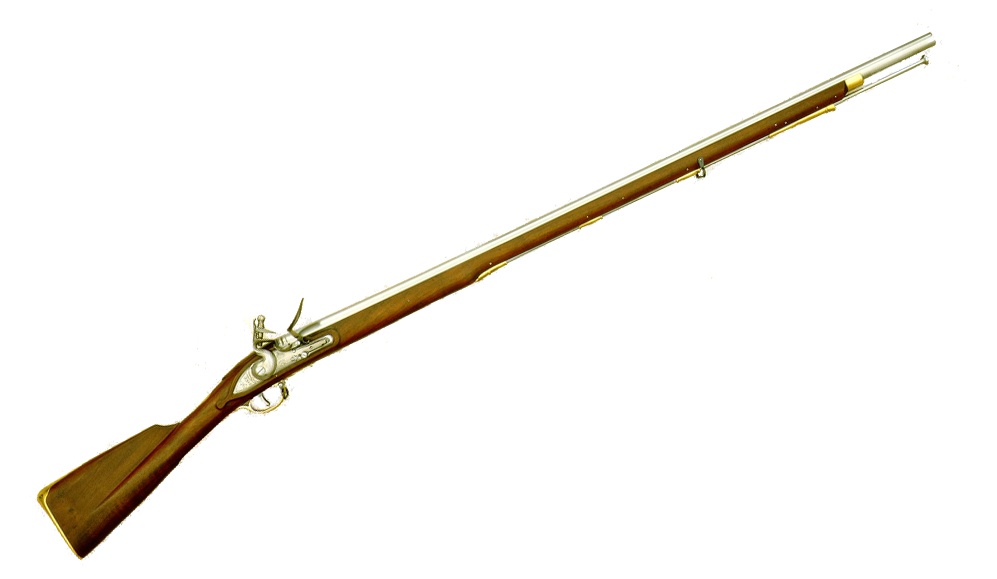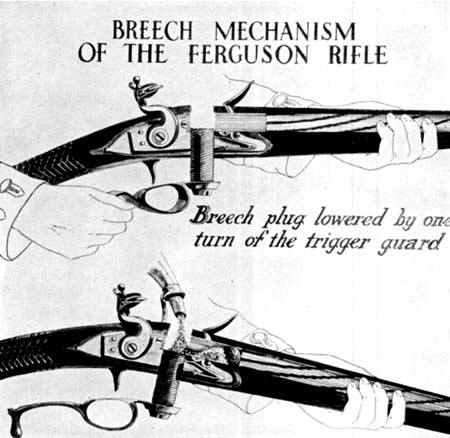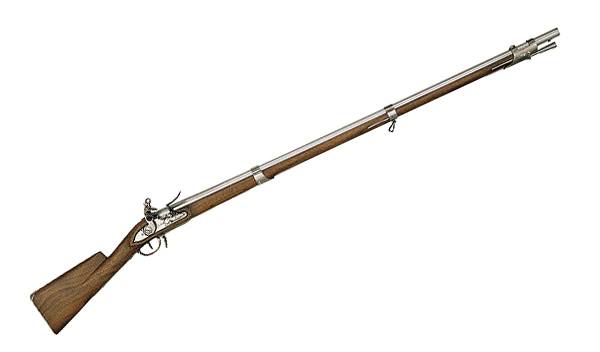

From the “shot heard around the world” to the decisive victory at Yorktown, America was forged to the sound of musket volley. While some of the firearms used in the American Revolution still capture the imagination and stir the heart, there are some that over time have slipped into the shadows of history. We aim to wake the ghosts from Concord, Trenton and Saratoga with the five guns you need to know from this definitive moment in time.
British Land Pattern Musket
 While the American Revolution had more storied firearms, this .75-caliber smoothbore was the workhorse in founding the nation and trying to prevent its foundation. Better known today as the “Brown Bess,” the muzzle-loading flintlock was the most common arm of the war, utilized heavily by both sides of the conflict.
While the American Revolution had more storied firearms, this .75-caliber smoothbore was the workhorse in founding the nation and trying to prevent its foundation. Better known today as the “Brown Bess,” the muzzle-loading flintlock was the most common arm of the war, utilized heavily by both sides of the conflict.
The musket was British in origin and came about during an era when armies began to standardize their firearms. And it was common among the Colonists before the war, who were mandated by the crown to be armed for their own defense. The reliable long gun also had an extensive history, serving the British Army from 1722 through to 1838 and even showing up in later American conflicts, such as the Mexican-American War.
Bess was fairly accurate compared to other muskets of the time, but by today's standards it would be considered laughably imprecise. By one estimate, less than a quarter of the shots fired by a soldier reached their intended targets. It pays to rifle a bore.
Tactically speaking, Bess was never intended to send a single lead ball at an individual target. Like all muskets, it was fired en mass at opposing forces with volume making up for inaccuracy.
Volume of fire was the reason why the musket was the preferred military long gun of the day. The smoothbore allowed for quick loading — particularly since it was typical to use balls smaller than the bore. By most accounts, a trained solider could get off three aimed shots with the musket in a minute, maybe four if he was steady of nerve and quick with his ram rod.
American Long Rifle
 Perhaps no single muzzleloader stirs the American imagination more than the American Long Rifle. Just the mention of what’s better known now as the Kentucky Rifle conjures up images of Colonists picking off Red Coats at distance.
Perhaps no single muzzleloader stirs the American imagination more than the American Long Rifle. Just the mention of what’s better known now as the Kentucky Rifle conjures up images of Colonists picking off Red Coats at distance.
The accurate flintlock did play that role in America's struggle for independence, perhaps most notably in the Battle of Kings Mountain and Battle of Saratoga. But overall its part was small compared to that of the musket. Typically, it was found in the hands of patriot militia, designated snipers or light infantry units.
Despite extending a soldier’s effective range past 200 yards, accurately mind you, it has a couple of gaping holes that stymied wider adoption as a battle rifle. Compared to muskets, the .40- to .50-caliber rifles were more difficult and time consuming to load, due to the patch, powder and ball all being separate. The grooves could foul after a number of shots and would require cleaning to regain accuracy. And they were incompatible with bayonets, which made a rifleman turn to his knife or tomahawk — undesirably so — upon an infantry charge.
Nevertheless, the American Long Rifle did enough damage during the American Revolution to earn a place in the Nation’s heart and mythology.
Pattern 1776 Infantry Rifle

Despite only 1,000 being built for the British Army, this flintlock rifle did see a fair share of action. They were issued to light companies of each regiment, as well as the Queen’s Rangers, and were likely present at most battles in the war. The “turncoat” rifle also shows the impact the American Long Rifle had on the war, with the 1776 being ordered to counter Colonist marksmen.
Designed by William Grice, and manufactured in Germany, the rifle (like the American Long Rifle) was patterned after the German Jäger rifle. Like the American Long Rifle, the Pattern 1776 vastly extended the range of a British soldier, who would could hit a target 200 yards out with the muzzle-loader. The .62-caliber rifles had a swamped octagon barrel 30 inches long and a hooked breech, but did not have a raised cheekpiece like the Jäger.
As a sidenote, if you have a Pattern 1776 hidden up in your attic, take care of it. Given the limited original stock, it is a extremely rare firearm — only nine are known of today.
Ferguson Rifle
 Of all the firearms on this list, the Ferguson Rifle saw the least amount of action in the American Revolution. Lucky for us Yanks.
Of all the firearms on this list, the Ferguson Rifle saw the least amount of action in the American Revolution. Lucky for us Yanks.
Designed by Major Patrick Ferguson, it was the first breech-loading rifle adopted by any military. While not the first breech-loader of its time, it had a major advantage over its contemporaries. It took one revolution of the .65-caliber's trigger guard to open the breech, where similar firearms took 11.
This design feature made for an extremely fast-firing and accurate firearm. It could pitch up to six shots per minute to a musket's three or four. Not to mention it was much more accurate fire, given the Ferguson’s rifling; it could hit a target at 200 yards and a bullseye at 100. Also of note, the rifle could be fired and reloaded from the prone position, as compared to muzzleloaders.
But outside of an experimental military unit formed and led by Ferguson, later disbanded during the war, the rifle saw little action in the American Revolution. It had an inauspicious debut in the Battle of Brandywine, with Ferguson’s rifle corps taking heavy losses.
Its initial performance, however, wasn't what did the rifle in. It was never adopted because of the manufacturing intricacies and cost, thankfully. With time to master the weapon and put it into wide use, the British had what looks to be a potential game-changer in their hands.
Charleville Musket
 The primary arm of the French Army during the American Revolution, the Yanks also got behind the business end of the Charleville. The long gun is more correctly called the French Infantry or Pattern Musket. But Charleville stuck, since it was manufactured at the French armory in Charleville-Mézières, Ardennes.
The primary arm of the French Army during the American Revolution, the Yanks also got behind the business end of the Charleville. The long gun is more correctly called the French Infantry or Pattern Musket. But Charleville stuck, since it was manufactured at the French armory in Charleville-Mézières, Ardennes.
The musket was .69 caliber, and performed like most of its compatriots of the time — fairly inaccurately. That’s the breaks of being a smoothbore. But it was considered by some to be superior to the Brown Bess, simply because it was slightly smaller, thus lighter than the British Musket — a function of its smaller caliber. But, honestly, who's counting ounces on firearms that weigh in at or near 10 pounds?
The Colonists received a total of 48,000 of the Model 1760 Charleville for their struggle against the British.

Next Step: Get your FREE Printable Target Pack
Enhance your shooting precision with our 62 MOA Targets, perfect for rifles and handguns. Crafted in collaboration with Storm Tactical for accuracy and versatility.
Subscribe to the Gun Digest email newsletter and get your downloadable target pack sent straight to your inbox. Stay updated with the latest firearms info in the industry.

![Best Concealed Carry Guns In 2025 [Field Tested] Wilson Combat EDC X9S 1](https://gundigest.com/wp-content/uploads/Wilson-Combat-EDC-X9S-1-324x160.jpg)


![Best 9mm Carbine: Affordable PCCs [Tested] Ruger Carbine Shooting](https://gundigest.com/wp-content/uploads/Ruger-Carbine-Shooting-100x70.jpg)
![Best AR-15: Top Options Available Today [Field Tested] Harrington and Richardson PSA XM177E2 feature](https://gundigest.com/wp-content/uploads/Harrington-and-Richardson-PSA-XM177E2-feature-100x70.jpg)
